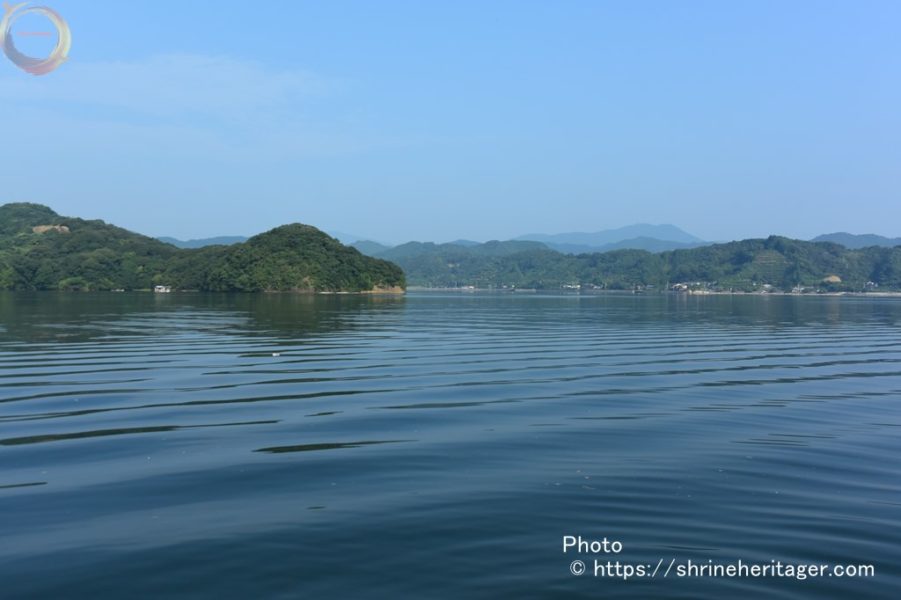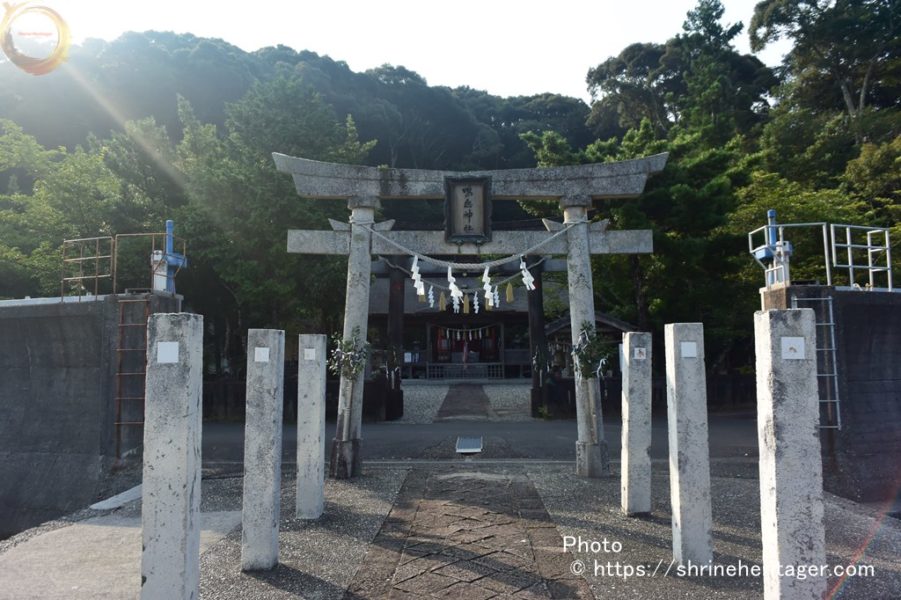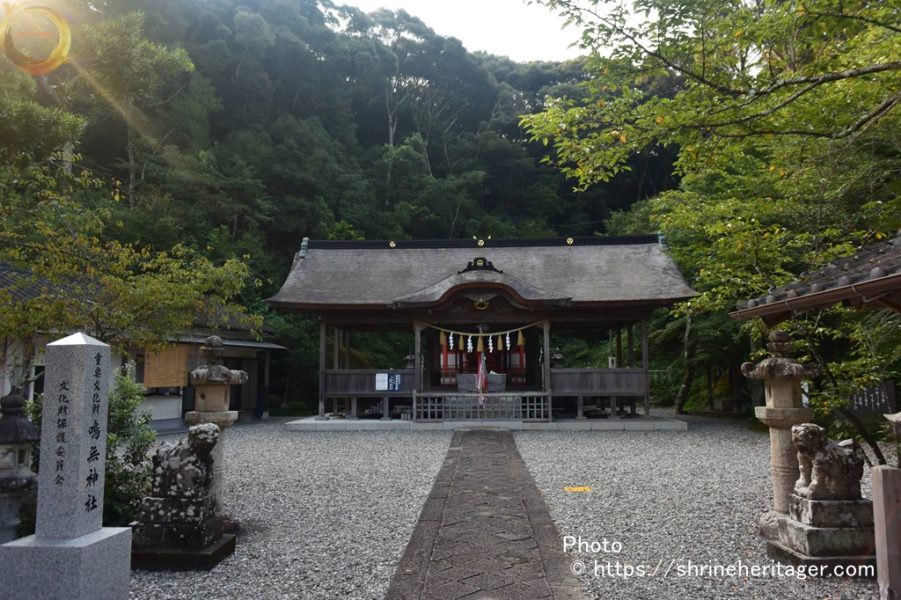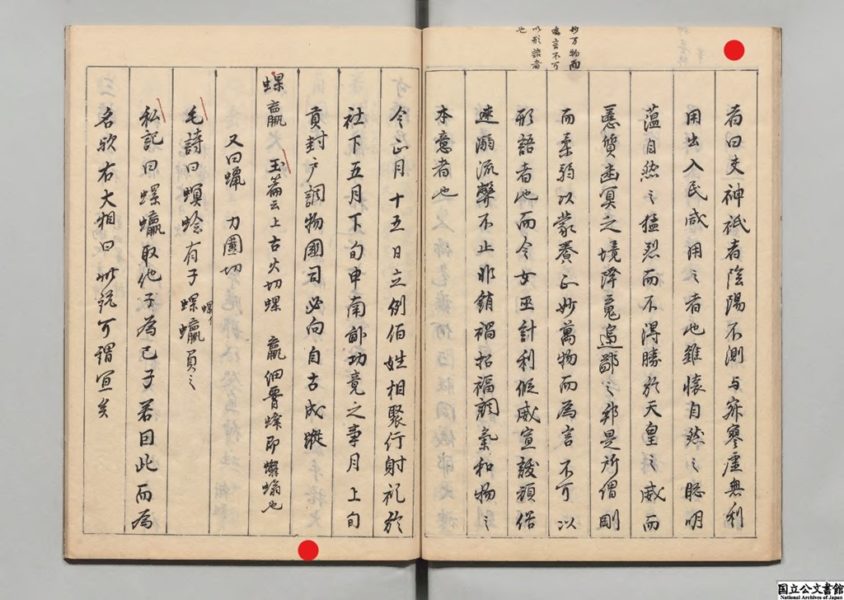Naruno Shrine is said to be the original shrine of Tosa Shrine (Tosa Kuni Ichinomiya) According to legend, it is the beginning of The Naruno Shrine that dedicated the "one word main life" that was washed away by Tosa and drifted to Uranouchi Bay.
目次
- 1 1.ご紹介(Introduction)
- 2 この神社の予備知識(Preliminary knowledge of this shrine)
- 3 Visit the Shrine (Pray at the Shrine)
- 4 神社の伝承(Old tales handed down to shrines)
1.ご紹介(Introduction)
The official name of this shrine and how to be called The present address and map I will introduce the history of the god and the shrine enshrined.
【神社名(shrine name)】
鳴無神社(otonashi shrine)
(おとなし じんじゃ)
[通称名(Common name)]
【鎮座地 (location) 】
Uranouchi Higashi-Singing, Suzaki City, Kochi Prefecture
[地 図 (Google Map)]
【御祭神 (God's name to pray)】
《主》一言主命(hitokotonushi no mikoto)
級長津彦命(shinatsuhiko no mikoto)
級長津姫命(shinatsuhime no mikoto)
【御神格 (God's great power)】
・海上安全 Maritime safety
・漁業繁栄 Prosperity of the fishery
・五穀豊穣 Pray for good harvest
・産業繁栄 Industrial prosperity
・縁結び Deepen connections and intimacy with people
・子孫繁栄 Prosperity of descendants
【格 式 (Rules of dignity) 】
"Engisiki-style god name book (engisiki jimmeicho)"
Motomiya of Tosa Kuni Ichinomiya "Tosa Shrine"
【創 建 (Beginning of history)】

鳴無神社(otonashi shrine)
Designated as an important cultural property of the country in March 1953.
The god of the festival, a word 鉏 (Ajisu Kone no Hikomi)
It is said to have been built more than 1500 years ago.The shrine hall has been rebuilt many time since ancient
The present shrine hall was rebuilt in 1663 by Tadayoshi, the second lord of the Yamauchi Domain.
After that, it rots and is dismantled and repaired in 1957. The construction cost is about 7.4 million yen.
The main shrine is Kasuga-zo and Kokera-an on the four sides of the two sides. The colorful inner part, the picture of the dance of the heavenly woman on the ceiling (Den, Murakami Ryuen, brush) Mintden, the shrine is a cut-off, Kokera-an,
Festival, August 25th, Shina-an Festival, Marine Gods
On August 23rd, the autumn festival, the Shinto dance was dedicated.
Company Treasures, 鍔, and Kanbun Three Years of Name (Important Cultural Properties, Prefectural Cultural Properties)
Octagonal lacquered mikoshi, stone lanterns, hand-washed pots, and tsgemochi are both designated cultural properties by the city.
Fire prevention facilities, fire alarm systems, waterworks and water discharge equipment were completed in May 1971.
October 5, 1979 Suzaki City Board of Education Kochi Prefectural Cultural FundFrom the precincts guide board
【由 緒 (history)】
Veseed bulletin board
Our festival god is the same as Tosa Shrine (Tosa Shrine is a besse shrine of Naruno Shrine)
Emperor 畧 22 years there is a god of the festival in this place,
He welcomed 13 domins with the Goshu Kongomaru and worshiped him as Taka kamo Daimeijin.Later, due to the earthquake on August 14, 2001, the majority of the land in our town sank to the bottom of the sea, and a shrine was established in the current place.
The Company continues to build the shrine hall by Mr. Kondo and Mr. Ohira, the great family of this region, Mr. Nagasokabe, and Mr. Yamauchi. It is said that it was very revered.
The shrine building is now built by Tadayoshi Yamauchi, the second lord of the Tosa 2nd clan, in the 3rd year of Kanbun.
In 1946, he belonged to the shrine's main office by an ordinance of a religious corporation.※See from "National Shrine Festival Comprehensive Survey (1995)" [Shrine Main Office]
【境内社 (Other deities within the precincts)】
スポンサーリンク
この神社の予備知識(Preliminary knowledge of this shrine)
This shrine has a long history.
『延喜式神名帳(engishiki jimmeicho)The two volumes that are regarded as important among all 50 ritual- style scrolls created by the Imperial Court during the middle Heian period are called " engishiki jimmeicho " (edited in December 927). Approximately 1100 years ago, the name of "2861 company" and the number of gods enshrined there are listed in the list of government offices (shikinaisha) nationwide.
【延喜式神名帳】(engishiki jimmeicho)The shrine record was completed in December 927 AD.
[旧 行政区分](Old administrative district)
(神様の鎮座数)南海道 163座…大29
(うち預月次新嘗10・さらにこのうち預相嘗4)・小134
[旧 国 名 ](old county name)
(神様の鎮座数)土佐国 21座(大1座・小20座)
[旧 郡 名 ](old region name)
(神様の鎮座数)土佐郡 5座(大1座・小4座)
[Meishin University Small] Shikiuchi Taisha
[旧 神社名 ] 都佐坐神社(大)
[ふ り が な ](とさにいます かみのやしろ)
[How to read](tosani imasu kamino yashiro)
https://www.digital.archives.go.jp/DAS/meta/listPhoto?LANG=default&BID=F1000000000000004146&ID=M2014101719562090086&TYPE=&NO=画像利用
国立国会図書館デジタルコレクション 延喜式 刊本(跋刊)[旧蔵者]紅葉山文庫

【オタッキーポイント】(Points selected by Japanese Otaku)
あなたが この神社に興味が湧くような予備知識をオタク視点でご紹介します
About the festival of The No Shrine (tonashi shrine)
Annual Festival "Shina Festival" (August 24th and 25th every year)

"Shina-no-Matsuri" is a festival of the late things between Tosa Shrine and Naruno Shrine (tonashi shrine), and it was a Shinto shrine where the god of the festival who was relocated to Tosa Shrine visited Motomiya.
From Tosa Shrine, the Shinto cherry blossoms of Naru-no-shrine were often stopped in the Edo period because of marine accidents, and now festivals are held at both shrines.
On the 24th, the 24th is the main festival on the 25th of the night before the festival.
Autumn Festival "Old Festival Chile Heppo" Lunar Calendar August 22-23
The autumn festival "Thanks to the Rich Harvest of Five Grains" will be held in September.
The feature of this festival is called "Chileheppo" and it is an ancient Shinto shrine where young boys and girls are married in front of God as "children of God".
Nine Chili Heppos parade through the precincts singing a song, and the events (boys) and shrine girls (girls) perform 339 degrees.
This is an autumn festival where the villager prays for the gratitude of the harvest, the marriage, and the prosperity of the descendants, and it is said that it has a deep relation with the benefit of the marriage.
Reiwa profit from the marriage of the person
The "tonashi shrine" is said to benefit various marriages.
There is Reiwa story as the marriage of the age of the war which should be noted.
The 126th Emperor Tokuhito and Empress Masako were married before their marriage.
An aide of the Imperial Household Agency prayed for marriage at Narumi Shrine, and his wish came true and he was married.
We were able to benefit from an important marriage for the Japanese people.
スポンサーリンク
Visit the Shrine (Pray at the Shrine)
I introduce the state when I visited this shrine.
From Kochi Station via R56 about 37km car 60 minutes
I'm sitting in the Naruno area in the back of Uranouchi Bay.
Because it is a shrine built to worship by ship from the sea, there is a guide board of "Kuroso Okuin" on the way to the other side of the road with the feeling of going around the bay by car.

There's not a single wave in the bay, and the beautiful scenery feels like you're traveling to a whole other world.

Crabs are also on the seawall and don't run away.

As you follow the gentle sea and the road along the seawall, you'll find a red torii gate that you could see from a long way.

"Ara Shrine" sits in front of the red torii gate.
They make a clean and clean axe


The vehicle will be guided to stop at the space in front of this red torii gate.

Arrived at Nunashi Shrine (tonashi shrine)

When you go through the red torii gate, you will see the Narumi Shrine precincts on your right, and on your left you will find a seawall and a stone torii gate right next to the sea.

The seawall in front of the shrine is open.

At the annual festival "Shinae Matsuri", funatorigo from the sea will go up from this pier to the precincts.

This is because "hitokotonushi no
ikoto" who escaped the capital a long time ago and landed in this place follows the reason why it landed here. The approach to Naru-no-shrine was originally "sea", or it was said that there was no road and the worship was a ship from the other side.

I came by private car, but I value the regular route and start the pilgrimage from the pier as a way from the sea.

But it's a beautiful view. It feels natural that God stayed here.

In the "Nitorii"
located on the pier, a shrine is enshrined, and a note rope hangs, and it is called "Naru-no-shrine" on the flat forehead. I bow and go through.

The approach extends straight to the shrine building The shrine building is located northwest toward the sea, and the precincts are surrounded by a low Tamagaki, and "Three Torii" is built at the entrance.

After all, it is enshrined, and the note line rope hangs, and there is "Naru-no-shrine" in the flat forehead, and care and faith are transmitted to the hand.

When I bow again and go through the torii gate, the name of the company is "Important Cultural Property Narumi Shrine" on the left hand side.

There is a "Temizusha" on the right hand side, and it cleanses it.
Speaking of water, there's a well on the right side towards the shrine.
There are no ponds or rivers around here, so you can imagine that a well with good water by the sea had a very valuable and important meaning.

Between the stone lanterns on the front approach, there is an old Shiba Inu.


On the right hand side of the precincts is the monument of Fujiwara Ietaka.

A boat floats in the sea of Tosa and it hangs out.
The sky of the capital is the end of the thaw.
This song is a song that the dreamer Fujiwara Ietaka Asaomi of the Heian period thought of the state of the boat play from the capital of Kyoto and sang.
The boat play began as a Shinto shrine shinto shrine more than 1,240 years ago (759) from now,
Ichinomiya Tosa Shrine in Kochi City also became a god's day, and both became lively boating full of Uranouchi Bay.
It became a famous thing in the whole country, and famous music people such as the light for the Japanese 邇 part from the capital of Kyoto sometimes turned down, and it played music and served the festival.May 5, 2001 Dedication of the monument Kochi City Tsukahara Mitsuru Nozaki
From the precincts guide board
I will go to the hall of worship

The family crest of the Yamauchi family, lord of the Tosa Domain, "marui mitsubakashiwa mon" is displayed in gold.

It is said that it is "Naru-no-shrine" in the flat forehead.

Give me a prayer.
When you reach the god of worship, where you worship God's power, pray with your hands together.

The main hall of the worship hall has a beautiful colorful color on the pillars, such as the amber-painted Kanuki set.

It is designated as an important cultural property of the country together with the main hall, the Mint Hall, and the worship hall.

The sculptures on the front of the main shrine and the left and right long presses are really splendid.

When I return to the front of the shrine, I return to the approach to the sea and torii from the quiet sea beyond it.

I go through the three torii gates and look back and bow.

After all, I want to go back to the tip of the pier again, and I go through the two torii gates.

"Rai" (90-degree bow)

スポンサーリンク
神社の伝承(Old tales handed down to shrines)
I introduce the thing related to this shrine and the literature described.
"Shaku Nihonki" Vol. 12 On the Tradition of the One Word Lord God Article
It is written about "one word main god" in "shakunki" which was established at the end of the Kamakura period.
Summary
"One thing, the Lord God
The God's Name Book says
Kazuki-za, Katsuragi-gun, YamatoKoku, Kazumi Shrine, Meijin University, Monthly ShinjoKojiki says...
Tosakuni
Fudoki says It is in Shiri that
it leaves the west side of the county house in the county house on the left side of the soil. The shrine of Shigeru Takaga on the left side of the soil (Ohoyashiro) The name of the god is "hitokotonoushi no ikoto"
I don't know much about mioya.
According to the aru tatsuhe, the child of Ohoanamuchi no mikoto,鉏 Ajisuki takahikona son (ajisuki takahikona no mikoto) Narito fuEmperor Yuroku (21st) February 4
When the Emperor was hunting at Yamato Katsuragiyama, the Emperor met a word lord god, and the word and behavior flowed a word master god to Tosa.The washed-out word god is enshrined in "Kamonochi" at first in Tosa, and is later transferred to "Tosa Takagamo Taisha" (present-day Tosa Shrine).
Then, in the 8th year of Tenpei Hoji (764), by Mr. Kamo's message, the main god of the word was moved to "Katsuragiyama Higashishita Takamiya Okagami" (present-day one-word shrine) in Yamato country.
However, the Japanese soul is still enshrined in Tosa province."
【原文参照】国立公文書館デジタルアーカイブ『釈日本紀』文永元年(1264年)~正安3年(1301年) 写本(模写本)明治 著者:卜部懐賢
https://www.digital.archives.go.jp/DAS/meta/listPhoto?LANG=default&BID=F1000000000000045548&ID=M2014100619504988793&TYPE=&NO=画像利用




It is said that it is a former shrine of Tosa Shrine (Tosa Kuni Ichinomiya) According to legend, it is the beginning of Naruno Shrine that dedicated "one word main life" which was washed away by Tosa and drifted to Uranouchi Bay.
"Rai" (90-degree bow) at TheOnashi shrine

See also tosa Shrine articles


